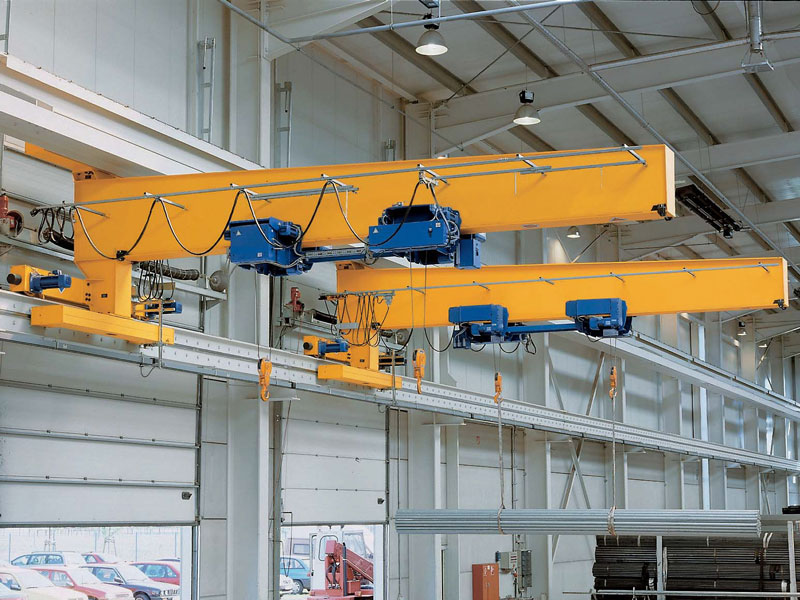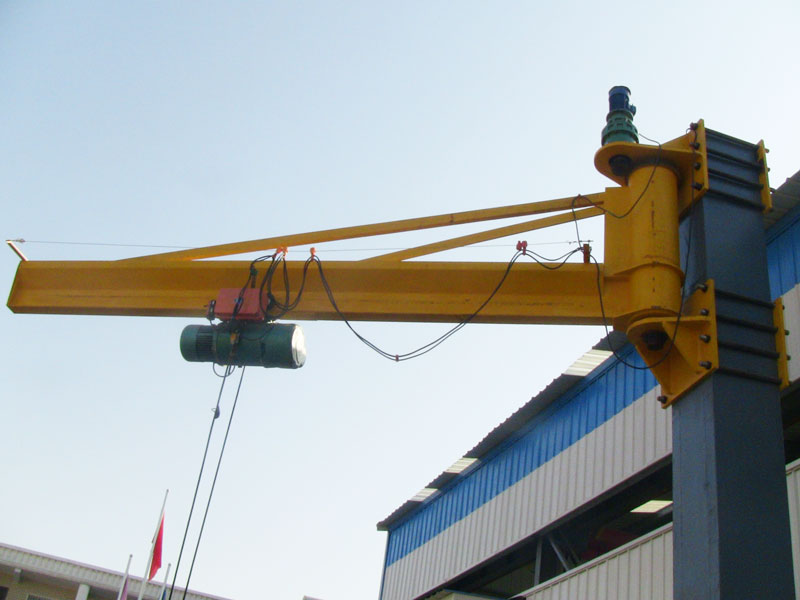While technology continues to advance, the research and development speed of industrial jib cranes is also accelerating. In order to meet the needs of various enterprises, many cantilever crane manufacturers are actively developing new products that adapt to society. SEVENCRANE is also a leader among these R&D manufacturers, serving people The production line solved many problems. So, what is the role of jib cranes in the production line? This article will explain it in detail.
Industrial jib cranes include motorized jib cranes, fixed column jib cranes, mobile jib cranes, outdoor jib cranes and stationary jib crane. Although they have different names, they also have common characteristics. For example, they occupy a small area, has high work efficiency, and has relatively high reliability when in use. It is very suitable for short-distance lifting and transportation, has a high frequency of use, and can perform relatively intensive lifting work.

1. Column-type jib crane is a cantilever crane that can rotate around a fixed column fixed on the base, or the cantilever is rigidly connected to the rotating column and rotates together relative to the vertical centerline in the base support. It is a jib crane composed of a column and a cantilever, and also named floor mounted jib crane. It is suitable for occasions where the lifting capacity is small and the operating service range is circular or sector-shaped. Generally used for loading and transporting workpieces in machine tools, etc.
Column jib cranes mostly use electric chain hoists as the lifting mechanism and operating mechanism, and wire rope electric hoists and hand chain hoists are rarely used. Rotation and horizontal movement operations are mostly performed manually, and electric operation is only used when the lifting capacity is large.

2. A wall-mounted jib crane is a cantilever crane that is fixed to a wall, or a cantilever crane that can run along an elevated track on a wall or other support structure. Wall-mounted cranes are used in workshops or warehouses with large spans and high building heights. They are most suitable when lifting operations near the wall are frequent. Wall cranes are mostly used in conjunction with the beam or bridge crane above. They serve a rectangular space near the wall and are responsible for lifting light and small objects. Large objects are borne by the beam or bridge crane.
3. Balance jib crane is commonly known as balance crane. It uses the principle of four-bar linkage mechanism to form a balance system between load and balance weight. It can use a variety of spreaders to flexibly and easily lift loads in three-dimensional space. The balance crane is light and flexible, and is an ideal lifting equipment for lifting small items. It is widely used in machine tool loading and unloading in factory workshops, workpieces in process rooms, automatic lines, production lines, sand box lifting, parts assembly, and Stations, docks, warehouses and other occasions.

When purchasing a jib crane, you should consider your actual needs. A suitable manufacturer is very important. A good manufacturer will configure appropriate solutions according to your own needs, and the equipment is developed and updated quickly, which can ensure that everyone can choose the equipment that is truly suitable for them.